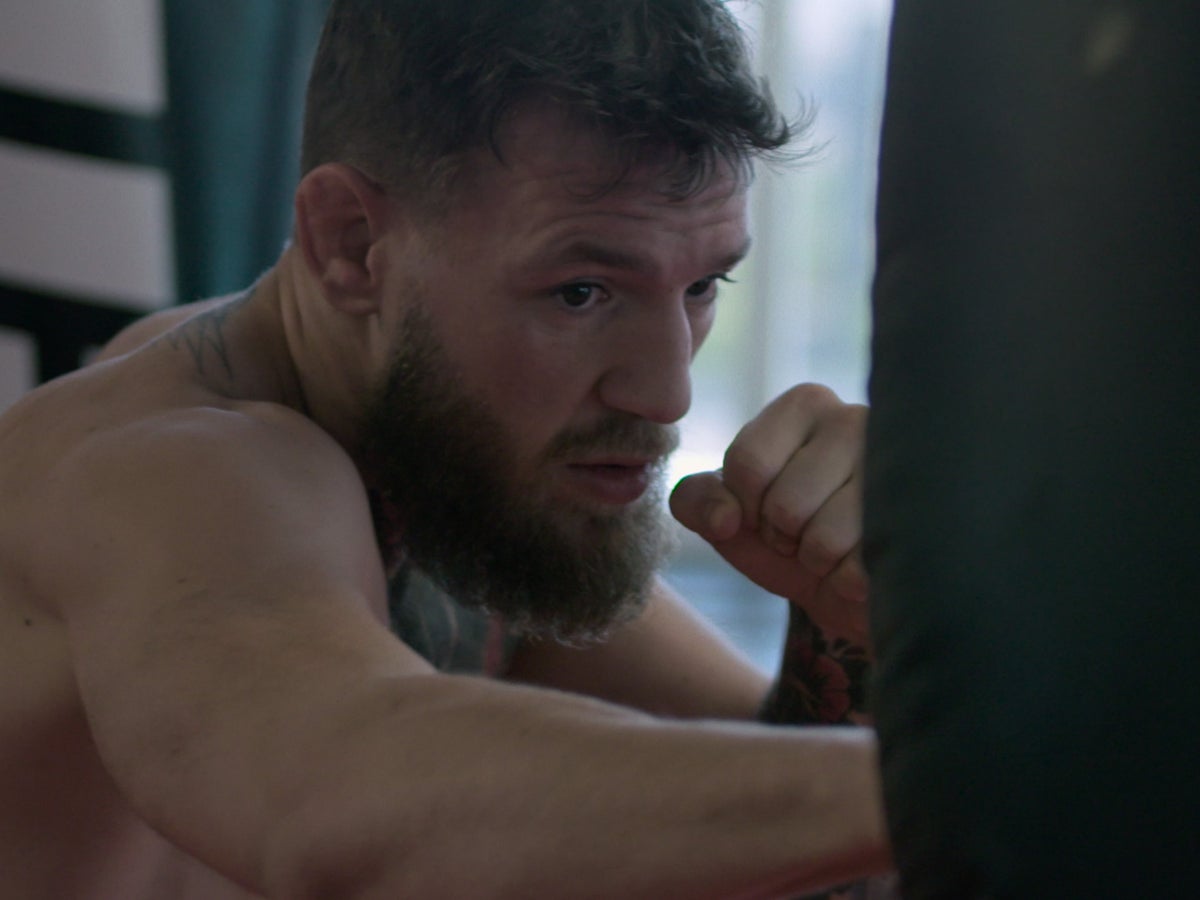Whether you are a fan of Conor McGregor or not, it is impossible to deny his impact on the sport of mixed martial arts (MMA). A one-of-a-kind fighter and character in his prime, the Netflix limited miniseries “McGregor Forever” covers the past few years of his career starting from his first attempt to regain the lightweight belt.
The show requires the viewer to have basic knowledge of the height of McGregor’s career with the Ultimate Fighting Championship, only providing a small glimpse into his life before signing for the promotion. Instead of retelling his history, vignettes of McGregor’s everyday life are presented throughout, leaving little room for older moments in his career. The series expects viewers to be aware of his rise and downfall. It leaves out his championship to hold belts in two different weight classes, which he won by defeating José Aldo and Eddie Alvarez respectively. The series also skips over his first shocking UFC loss to Nate Diaz along with other in-between moments, yet are expected to be common knowledge. For those who are new to the sport of MMA or have no prior knowledge of McGregor’s career, Gavin Fitzgerald’s 2017 documentary “Conor McGregor: Notorious” serves much better as an introduction.
Most mixed martial artists would consider themselves blessed to have the career of Conor McGregor, as he has acquired the money, fame and accolades possible. While these rewards reveal themselves from masterful exhibitions of pure skill and hard work, the documentary series proves that what happens outside of the octagon matters just as much.
McGregor’s fiancée Dee Delvin and their children frequently are shown on screen, and his maturation in terms of being a family man is presented in a raw manner. Archival footage is used in abundance to show how his fiancée impacted him as a person. McGregor’s team is also frequently featured, with their loyalty proving to be long-standing and integral to the apex of his dominance over the sport. The combination of both support systems can be attributed to much of his success, and the miniseries presents this from their perspectives directly, showing the viewer a softer side never before seen.
The physical side of McGregor’s training is depicted in vivid detail, with the grueling weight-cutting process highlighting the peak of physical exertion he undergoes. He has never been one to shy away from a challenge, as exhibited by his willingness to shift between weight classes; this is the best example of his persistent drive for success, as it becomes apparent that this stern mentality forged itself through hardship.
With the world seemingly bending to his will, McGregor does not shy away from the spotlight. His creative and downright absurd trash talk manifests itself in various ways, earning him both a devout group of fans and critics alike. Bombastic, loud, arrogant — any bold aphorism can be applied to McGregor’s billionaire-style persona. His worst moments are shown without bias, most notably the bus attack, leading the dichotomy between both his respectful and rowdy side to be blurred. Both of these halves are presented in detail, with the long-anticipated clash with the undefeated Khabib “The Eagle” Nurmagomedov rupturing any doubt of the aforementioned. His eventual loss via submission would be the third loss out of his four most recent fights, serving as a perfect segway for the exploration of his necessary shift in attitude between each clash. The editing complements this, building momentum and significance as the months go by.
While the animosity between McGregor and Nurmagomedov stemmed from a long-lasting place of malice, his feud with American Dustin “The Diamond” Poirer exploded in rather an abrupt fashion. The history between the two men is rich, with their first bout resulting in a first-round TKO for McGregor, leading to an unnervingly respectful McGregor before their second meeting.
The latter half of the series showcases the harshness of the sport and how individual circumstances can change the course of one’s life. Poirier’s back-to-back TKOs and the subsequent aftermath are extensively covered. Despite this, perhaps the most infamous post-fight interview in history, featuring a defeated yet angry McGregor with a broken tibia, is unfortunately not featured. Its inclusion would have given a rare opportunity to understand why the previously established mutual respect shattered out of nowhere, with the shift only being alluded to through the press conference footage. However, this same injury presented in the first episode comes full circle, wrapping the narrative in a neat bow.
Simple but effective in its presentation, “McGregor Forever” invites us to understand the unapologetic nature of its subject. While it presents all of the necessary pieces of the puzzle, it leaves just enough room for one to form their own opinion of the Irishman, and whatever that may be, one thing is certain — we haven’t seen the last of Conor McGregor.
Verdict: Even with its few missed opportunities to dive deeper, the miniseries provides an understanding of McGregor’s flaming desire to answer only to himself.








